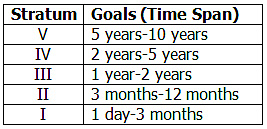Charlie was in my office yesterday. We talked about mostly nothing for a half a minute, when I suddenly became uncomfortable. Something happened inside of me, mostly with my stomach. I wasn’t in discomfort, but there was a significant twinge.
The twinge in my stomach was caused by a short silence, a white space in the conversation. I asked a question about Charlie’s last meeting with his boss. There was no response from Charlie. Silence in a conversation often causes a momentary awkwardness.
I don’t know where this conversation is going next? I thought I knew, but I don’t know now. I wish I knew, but I still don’t know. I hope this conversation get some direction soon, because this awful silence is killing me. BOOM. My stomach told me we were talking about something more important than the weather.
My automatic (unconscious) reaction was to avoid. Do anything to make this feeling go away. The silence was awkward. The automatic (unconscious) response was simply to “talk.” Make the silence go away. If I talk, the silence will be gone, the awkwardness will be gone and I won’t feel this way. Talking would also likely steer the conversation back to a discussion of the weather.
Channel the reaction. My bio-response to Charlie was a twinge in the stomach. The twinge told me that this conversation had potential to be more meaningful. I could avoid it or I could engage. Avoidance would be easy, simply talk to fill the silence, talk about anything.
OR,
I could engage, and let the silence continue. I could let the silence do the heavy lifting to move this conversation to the next level. Something significant had happened between Charlie and his boss and Charlie needed to talk about it. We could have talked about sports, or we could have engaged in a meaningful discussion that had real impact on Charlie.
The twinge in the stomach gives the Manager a heightened sense of intuition and the possibility to channel the reaction to a more productive outcome. Listen to the twinges, watch for white space in conversations.
